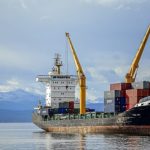A strike by union dock workers at East Coast and US Gulf ports seems more likely after International Longshoremen’s Association (ILA) Wage Scale Delegates voted unanimously at the end of their two-day meeting to support leadership’s intentions to walk off the job if a new labor deal is not agreed to when the contract expires on 30 September
The ports, represented by the United States Maritime Alliance (USMX), contend that the offer on the table “demonstrates a willingness by our members to reach a new deal before the end of this month,” and that it remains committed to reaching a new deal before the current agreement expires.
Last week, both parties submitted documents with the US Federal Mediation and Conciliation Service (FMCS) informing the agency of a dispute between the parties, as required by law.
The looming work stoppage would have major impacts on the US economy, and the National Retail Federation (NRF) has urged both sides to resume negotiations
Union delegates from the 13 port areas included in the current agreement received a strike mobilization plan from ILA Executive Vice President Dennis A Daggett during the two-day meeting that will be implemented if a new agreement is not reached in time.
USMX said in a statement posted to its website that “the ILA continues to strongly signal it has already made the decision to call a strike and we hope the ILA will reopen dialog and share its current contract demands so we can work together on a new deal, as we have done successfully for nearly 50 years”
USMX said its offer includes industry-leading wage increases, retention of the existing technology language in the current agreement, which already formalizes that there will be no fully automated terminals and no implementation of semi-automated equipment or technology/automation without agreement by both parties to workforce protections and staffing levels, increases to retirement account contributions, higher starting wages and continuation of premier health care coverage.
The ILA is seeking better pay, including container royalty
Market participants have said a strike by dockworkers would not have much of an impact on liquid chemical tankers.
One reason is that most terminals that handle liquid chemical tankers are privately owned and do not necessarily use union labor
Also, tankers do not require as much labor as container or dry cargo vessels, which must be loaded and unloaded with cranes and require labor for forklifts and trucks.
But more liquid chemicals are being moved on container ships in isotanks.
CONTAINER RATES
Rates for shipping containers from east Asia and China to the US fell again this week and global average rates continued to fall at a faster rate, according to multiple analysts. Supply chain advisors Drewry in its World Container Index showed average rates down by 8%, as shown in the following chart.
The decrease in rates from China to both US coasts is shown in the following chart from Drewry.
Despite the looming threat of a port strike in the US, transpacific Eastbound freight rates have seen a slight dip this week, Drewry said.
Judah Levine, head of research at online freight shipping marketplace and platform provider Freightos, said the looming strike may be pushing more volumes to the West Coast, supporting some rebound in rates since mid-August, but prices are nonetheless 15% below their high for the year reached in mid-July
“Some of this rate decline is likely also due to capacity increases, including from opportunistic carriers who launched transpacific services when rates were spiking earlier in the summer” Levine said
Container ships and costs for shipping containers are relevant to the chemical industry because while most chemicals are liquids and are shipped in tankers, container ships transport polymers, such as polyethylene (PE) and polypropylene (PP), are shipped in pellets
They also transport liquid chemicals in isotanks
LIQUID CHEM TANKER RATES STABLE
Rates for chemical tankers ex-US Gulf were unchanged this week on trade lanes assessed by ICIS
Rates firmed on the USG to Mediterranean, and to Mexico’s East Coast.
The firming is due to a lack of available tonnage amid more inquiries and fixtures along these trade lanes.
However, rates to both Asia and India are facing downward pressure, especially for stainless steel vessels The downward pressure is likely to hold into next week.
Overall, throughout September the spot market should remain soft as there is open partial space in the US Gulf and as most owners continue to depend on contract tonnage
Bunker fuels in the USG were slightly lower following the weaker energy complex
PANAMA CANAL MAINTENANCE
The Panama Canal will be conducting maintenance from 10-25 September on the center wall culvert of the Gatun Locks but is not expected to limit transits, according to the Panama Canal Authority (PCA)
Although the culvert maintenance will increase the time required to fill and empty the chamber in both lanes at Gatun Locks, this should not affect significantly the capacity of the Panamax Locks to warrant a booking condition change.
Since the culvert outage is at Gatun Locks. Neopanamax vessels should not be affected as result of this maintenance.
The PCA added an additional booking slot effective 1 September, bringing the total number of passages allowed per day to 36. almost at par with the 36-38 transits/day seen before a drought forced the PCA to limit transit for the first time in its history.
There are 10 slots for Neopanamax vessels, 20 for supers and six for regular vessels.
The better conditions at the canal are likely to improve transit times for vessels traveling between the US Gulf and Asia, as well as between Europe and countries on the west coast of Latin America.
This should benefit chemical markets that move product between regions.
Wait times for non-booked southbound vessels ready for transit are 2.6 days for northbound vessels and 0.4 days for southbound vessels on 6 September, according to the PCA vessel tracker.
Source: By Adam Yanelli, Additional reporting by Kevin Callahan, ICIS





